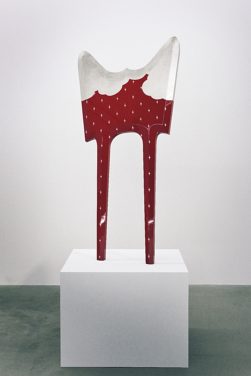
Portland Japanese Garden presents the art of Noritaka Tatehana in his first-ever North American solo exhibition. Installed in the Pavilion and Tanabe Galleries, Tatehana enchants through his use of traditional symbols of sophistication and beauty with the inclusion of new, never-before-seen works of art created especially for this exhibition. Co-curated by the Garden’s Curator of Art, Laura J. Mueller, PhD and Christina Cacouris, a journalist and curator based in New York City, the exhibition showcases Tatehana’s sculptural and two-dimensional works of art and design that are created by employing the most refined Japanese craftsmanship, reimagining the timeless appeal of these celebrated symbols for contemporary audiences.

Japan’s art history is long and distinguished with varied richness and celebrated traditions of form, design, and craftsmanship. Most often, Japanese art centers around a deep understanding and respect of nature and natural beauty in both subject and materiality. But, along with the well-respected, artistic traditions of Japan, overwhelming feelings of constraint can burden a contemporary artist tied to its legacy. Artists can feel trapped by the weight of history and tradition. As visual and cultural experience has become truly global, cultural and geographic distinctions have become blurred, often losing distinct significance and meaning. This environment allows artists to willfully break from the constraints of art historical narratives that came before them. Rather than shun the seemingly restrictive artistic traditions of Japanese art and craft, Tatehana embraces them by sampling, valtering, and repackaging traditional symbols to create dynamic works of art for the global now.

Appropriating traditional signs of Japanese elegance and refinement, Tatehana removes these signs from their original historical context of past centuries and amplifies their symbolic meaning in his art. In Heel-less Shoes, the raised platform sandals (denoting the highest-level courtesans) are removed from the cobble pathways of the Yoshiwara entertainment district of the 18th and 19th centuries and refashioned to grace the feet of current society’s most fashion-forward celebrities like Lady Gaga and Daphne Guinness. In Hairpin Series, the elaborate lacquered hairpins used in the coiffures of the most refined geisha entertainers of Kyoto’s Gion district are recreated as monumental 3-dimensional forms that embody elevated status and accomplishment while removing any possibility of utilitarian purpose. And in Void Sculpture Series, the exquisitely crafted sword blades of the samurai are removed from their poetically violent potential to create sculptural works of the most captivating beauty and exquisite craftsmanship. The success of Tatehana’s art and design comes through recognition of these long-held symbols that epitomize celebrated craftsmanship and his thoughtful refashioning of his output for contemporary appreciation.
Presenting Sponsors: Arlene Schnitzer & Jordan Schnitzer. Additional support provided by the Regional Arts & Culture Council; the Japan Foundation, Los Angeles; and Yamato Transport U.S.A., Inc.